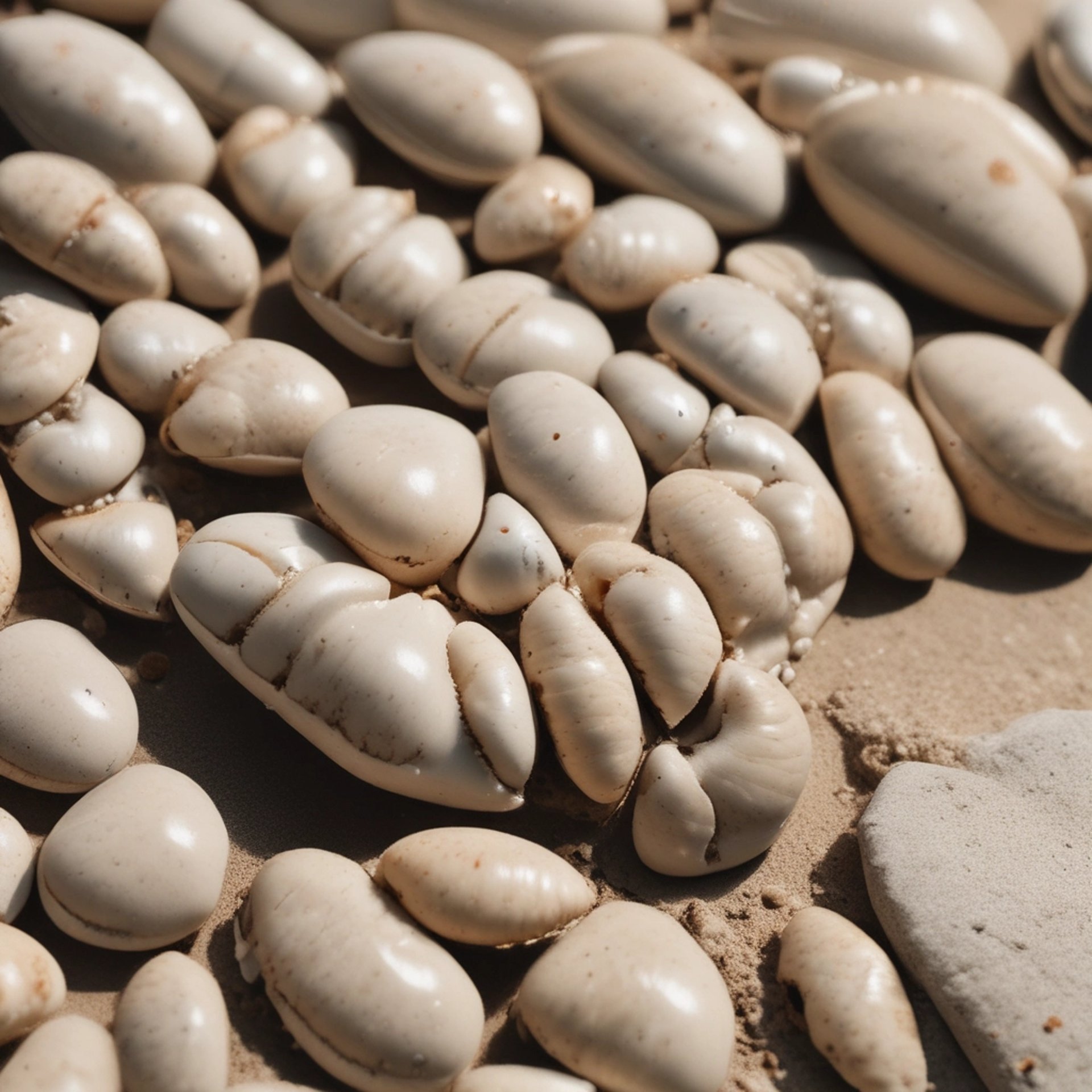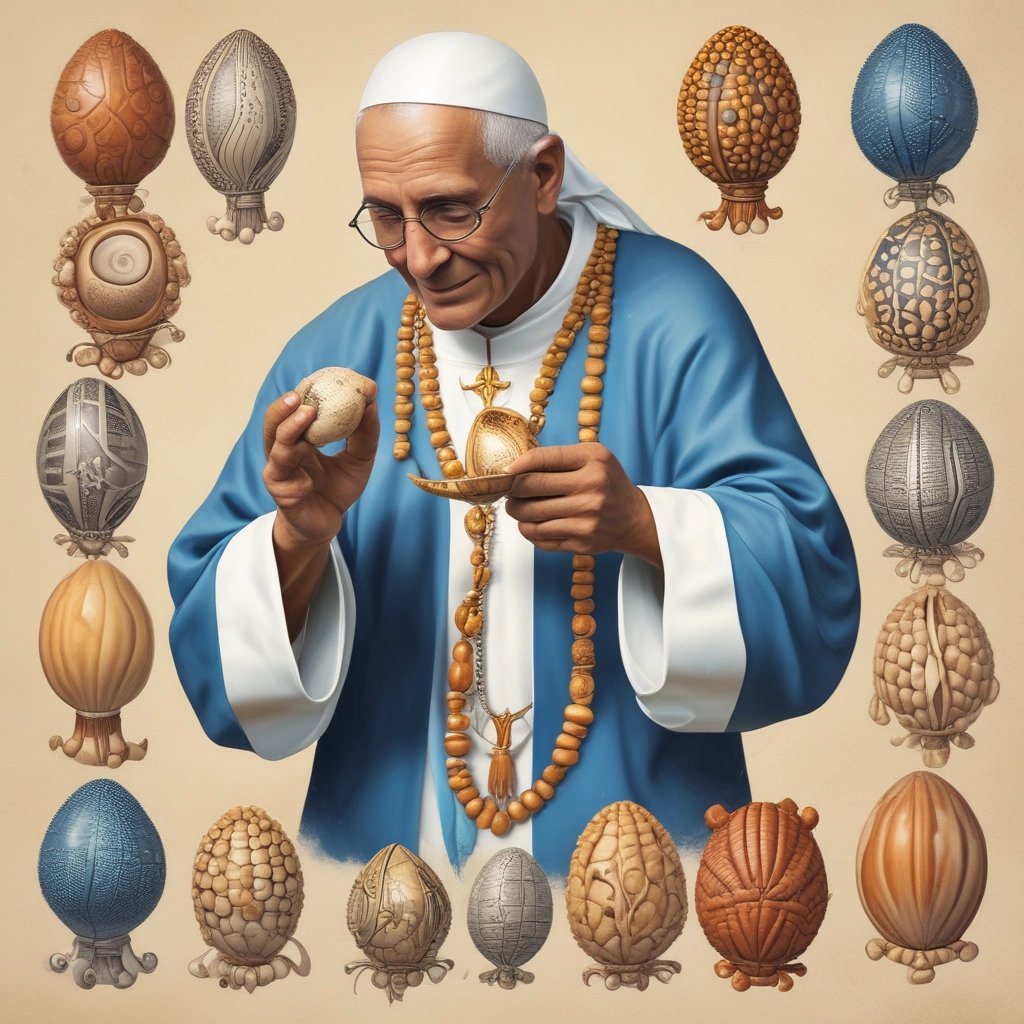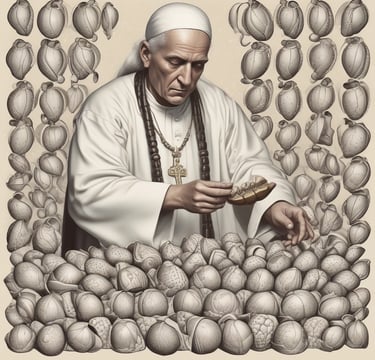The Ancient Art of Cowrie Shell Casting: Unveiling its Origins and Practices
Albatt Universe
11/19/20255 min read



Introduction to Cowrie Shell Casting
Cowrie shell casting, an ancient practice that dates back thousands of years, is a form of divination that involves the use of cowrie shells to gain insight and guidance. Historically, these shells have held immense significance in various cultures across the globe, serving both practical and spiritual purposes. Not only were cowrie shells utilized as a medium of exchange in commerce, but they also emerged as cultural symbols of wealth, fertility, and prosperity.
In many African and Asian traditions, cowrie shells are employed as tools for fortune-telling and spiritual communication. The practice typically involves casting a set number of shells and interpreting their orientation once they land. Practitioners of this divination method believe that the arrangement of the shells can provide clarity regarding past events, present situations, or future possibilities. This not only sheds light on individual inquiries but also reflects the collective beliefs within the communities that rely on such practices.
The significance of cowrie shell casting extends beyond mere fortune-telling; it encapsulates a framework of cultural beliefs and rituals. The variations in casting techniques and interpretations can be seen across different civilizations. For instance, in West Africa, specific traditions may emphasize the spiritual significance of the shells themselves, while others focus on their role within the broader context of rituals and ceremonies. As such, cowrie shell casting serves as a testament to the interconnectedness of culture, spirituality, and the human drive for understanding the mysteries of life.
Through exploring the origins and nuances of cowrie shell casting, one can appreciate not only its historical relevance but also its enduring impact on contemporary spiritual practices. The practice continues to engage practitioners and seekers alike, revealing a rich tapestry of human experience and belief systems spanning centuries.
Historical Context and Origins
Cowrie shell casting, an ancient practice steeped in tradition, has its roots extending back thousands of years across various civilizations. The cowrie shell, particularly from the species Cypraea moneta, played a significant role in the history of currency and culture. Its use as a medium of exchange can be traced back to Africa, Asia, and the Pacific Islands, making it a valuable commodity in trade and daily transactions. Evidence suggests that cowrie shells were utilized as currency as early as 1200 BC in parts of Africa and reached a remarkable level of prominence by the time of the African empires, such as Mali and Songhai.
As cowrie shells traveled through trade routes, they began to be adopted in various cultures. In India, for instance, they were not only used as currency but also held substantial symbolic meanings. Cowrie shells were linked to fertility and prosperity, often used in ceremonial practices. Similarly, in the Pacific Islands, these shells have been associated with spiritual beliefs, reflecting the deep connection between the people and nature. The shells were often included in rituals and used to adorn items of significance.
Literary references further emphasize the importance of cowrie shells in history. Historical texts and accounts from travelers have documented their use in rituals, trade, and everyday life. Notable figures, such as Ibn Battuta, an explorer in the 14th century, mentioned cowrie shells during his travels, showcasing their importance across regions. Moreover, as cultures evolved, so did the understanding and usage of these shells, which has influenced contemporary practices in divination and fortune-telling today. The historical context of cowrie shell casting illustrates its resilience and adaptability through time, highlighting its role in shaping various social and economic structures across diverse cultures.
Different Systems of Cowrie Shell Casting
Cowrie shell casting, an ancient divinatory practice, varies significantly across cultures, with distinct methods, shells used, and interpretations of the outcomes. This practice can be categorized into several systems, each reflecting the unique traditions and beliefs of the societies that developed them. In West Africa, for example, the Yoruba people commonly utilize the small, elongated cowrie shells, known as *Cypraea moneta*. This system often employs a set of 16 shells, which are cast onto a wooden board marked with specific symbols. Each combination and orientation of the shells corresponds to various meanings and messages, revealing insights into the questions posed by the practitioner.
In contrast, the Mwari tradition of Zimbabwe features a more complex approach. Practitioners may use anywhere from three to seven cowrie shells. Each shell is often intricately painted or carved, symbolizing ancestral spirits and their guidance. The shells are cast into a circular pattern, and the interpretations are deeply rooted in the spiritual context of the question being asked. This system emphasizes the interconnectedness of the spiritual realm and the terrestrial, as diviners seek answers that align with the life experiences of the individual.
Another notable approach is found in the Pacific Islands, where various forms of shell casting are employed. In Hawaii, for instance, specific shells, such as the *Cypraea argus*, are regarded as potent tools for divination. Practitioners employ a method resembling that of dice rolling, where the shells are tossed and the resulting positions are interpreted based on established rules. While the fundamental principles remain similar—casting shells for guidance—the cultural nuances and interpretations diverge significantly, showcasing the rich diversity within this practice.
By examining these various systems of cowrie shell casting, a tapestry of shared practices and unique interpretations emerges, illuminating the cultural significance and historical context of this ancient art form.
Modern-Day Applications and Trust in Cowrie Shell Casting
In recent years, there has been a noticeable resurgence of interest in cowrie shell casting, a practice steeped in history that finds relevance in contemporary spiritual practices and wellness cultures. The unique attributes of cowrie shells, once used as currency and symbols of feminine energy across various cultures, have transitioned into tools for divination, meditation, and personal insight in today's society. This revival signifies a deep-rooted desire among individuals to reconnect with ancient wisdom, offering a means for self-exploration and improved mental health.
Modern practitioners of cowrie shell casting often adapt traditional techniques to fit present-day contexts. This includes integrating the practice into holistic healing sessions, spiritual workshops, and even therapeutic environments. Personal narratives from individuals who have embraced cowrie shell casting reveal transformative experiences, where casting these shells has provided clarity during times of uncertainty. Testimonials often highlight how this ancient art facilitates a sacred connection to one’s self and the universe, underscoring its importance in personal growth and spiritual development.
However, with the revival of cowrie shell casting, ethical considerations have emerged. It is essential for contemporary practitioners to respect the cultural significance of this art form while ensuring authentic representation of its origins. Engaging with indigenous communities for insights and guidance can help prevent cultural appropriation and foster respectful exchanges of knowledge. Trust and authority in the practice are paramount, and engaging with qualified practitioners enhances the overall credibility of cowrie shell casting in modern contexts.
This adaptation of cowrie shell casting not only preserves ancient methods but also encourages broader acceptance of alternative spiritual practices. As individuals increasingly seek meaning and solace in their lives, the value of these ancient techniques should be fully appreciated, urging a reflection on how they can enrich contemporary existence while maintaining respect for their origins.








